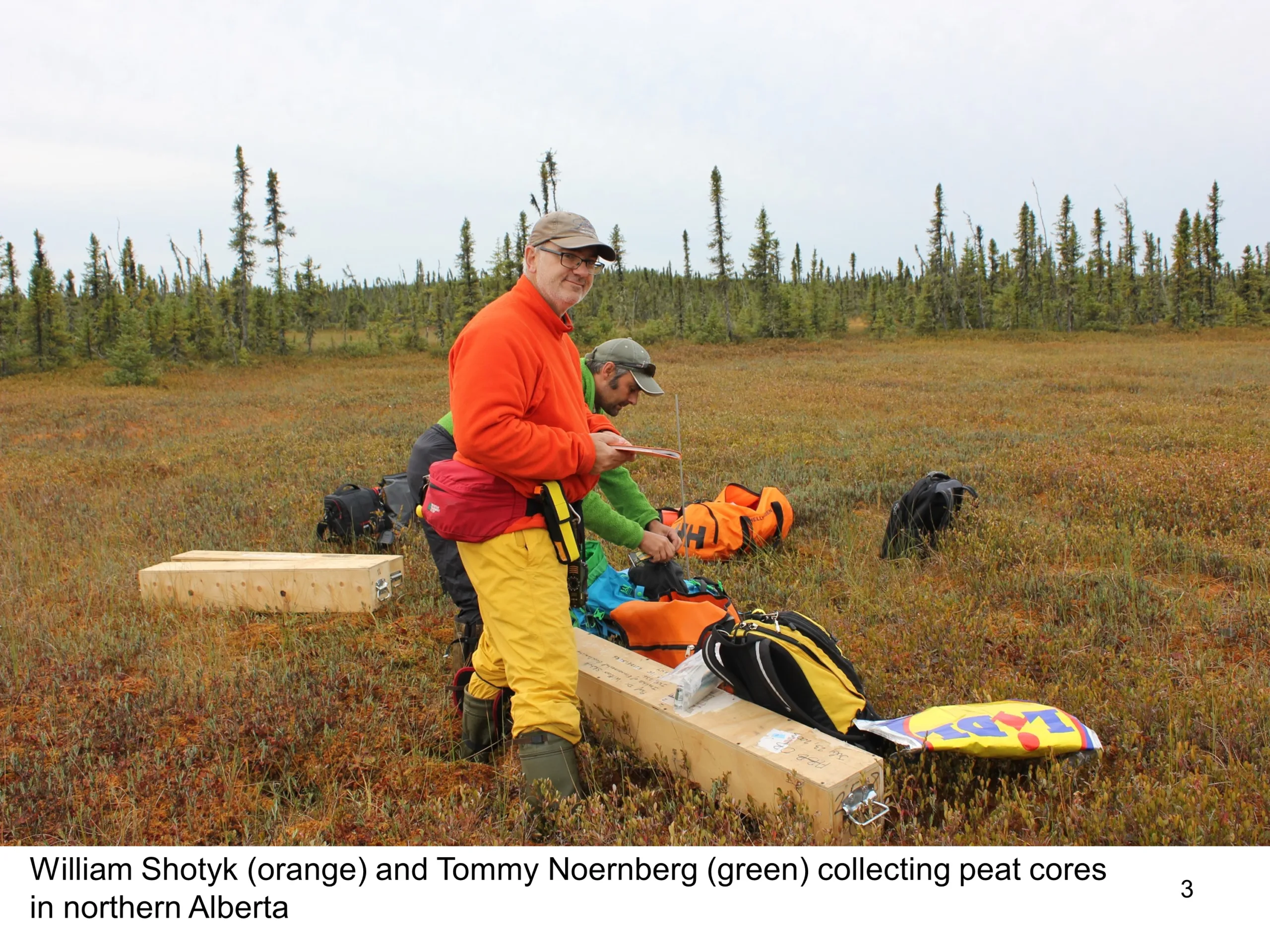Agreements continue valuable oil sands research at the University of Alberta
Dr. William Shotyk began pondering the sources of metals to the Athabasca River watershed more than a decade ago. The Canadian geochemist was working at the University of Heidelberg, where he was studying ice cores from the Canadian Arctic to trace lead in the atmosphere going back in time more than 15,000 years.
“I happened to read an editorial in The Globe and Mail about lead going into the Athabasca River from oil sands developments. I had never been to the Athabasca River but, as a scientist, it seemed strange because I’ve never heard of an occurrence of lead in bitumen,” said Shotyk, who was working as the Director of the Institute of Environmental Geochemistry at the time. “So, I asked myself, ‘What is the reality of environmental contamination by trace elements in northern Alberta? While trace elements such as lead are potentially toxic depending on their chemical form and abundance, these elements are found in all soils, plants and waters but generally at low concentrations.’”
That question led Shotyk to join the faculty at the University of Alberta in 2011, as the Bocock Chair for Agriculture and the Environment, and build a metal-free, ultraclean laboratory to study trace elements in soil, water, air, manure and plants (the SWAMP lab). Shotyk and his team at the university’s Department of Renewable Resources began analyzing water and sediment samples from the river, snow, moss and peat from bogs and other sites in the Lower Athabasca River watershed, with funding from Alberta Innovates and Canada’s Oil Sands Innovation Alliance (COSIA), in 2014.
Shotyk’s research, which to date has found oil sands operations have not measurably contributed base metals in the watershed, will continue after the Pathways Alliance, COSIA’s parent organization, signed several agreements in December with the University of Alberta. Nine research projects will receive $7.2 million in funding over the next three to five years.
“This research is extremely important because it will help us improve our performance, fill knowledge gaps, further our understanding about the impacts of our operations in the natural world and help develop technologies to reduce those impacts,” said Wes Jickling, Pathways Alliance’s vice president of technology development and COSIA. “These agreements help leverage our investment of $2.38 million with matching funding from the federal government and other sources. This is a major investment in really smart people, some of whom have been working with us for more than a decade, to continue to build on their valuable work in several important areas.”
One of those projects is treating oil sands process water stored in tailings ponds. This project will continue after an agreement was reached to continue Dr. Mohamed Gamal El-Din’s work in the development of novel materials and advanced treatment processes for water and wastewater remediation as the NSERC Senior Industrial Research Chair in Oil Sands Tailings Water Treatment.
“I am thrilled to pursue our multidisciplinary research aimed at developing novel approaches for wastewater treatment and reclamation. Our team has been working on this for over a decade and I am delighted to see the progress we have made. Our ultimate goal is to promote safe and sustainable wastewater reclamation practices for the betterment of Alberta and Canada.” says Gamal El-Din, a professor in the Department of Civil and Environmental Engineering at the university. “Our dedication expands to forging partnerships with COSIA. Collaboratively, we are enthusiastic about delving into the exploration and application of sustainable and resilient reclamation approaches, advancing our shared mission.”
Another project extended by the agreement was Dr. Mohtada Sadrzadeh’s work on developing thermally stable membranes to treat water produced in steam-assisted gravity drainage operations. The research started in 2016 and expanded in 2020 to develop membranes that could pre-treat high-temperature water produced by operations as well as process water. The extended funding will allow Sadrzadeh’s team at the university’s Advanced Water Research Lab to continue their progress developing commercial membranes by fabricating and conduct testing on the latest spiral-wound high-temperature reverse-osmosis membranes with a target completion date of 2026.
“We are excited because we know our work can pave the way for a more environmentally friendly and cost-efficient future in the oil sands industry,” says Sadrzadeh. “We really enjoy working with COSIA. Their representatives have consistently offered valuable insights from the technical and industrial standpoint throughout the project.”
The funding announcement also pleased Dr. Fiorella Barraza, a postdoctoral fellow who has spent four years supervising graduate students and analyzing trace elements in the SWAMP laboratory as part of the Metals versus Minerals project started by Shotyk. But the access to collect samples and data from the industry is just as impressive for Barraza.
“All of the funding that goes into this research is unbelievable and important, and these partnerships are unique, generating more understanding and information” says the Peruvian biogeochemist, who completed her graduate studies in France. “In Peru, there are a lot of mines, but it is not really possible to get access to the data that we have been provided here in Canada. The funding is important but so is the ability to gather samples and access to data.”
Shotyk, whose Metals versus Minerals project was extended until 2027, sees the data it generates as helping policymakers make informed decisions about development.
“All of the metals we study have a natural source in the Athabasca River, in addition to possible industrial inputs. If we don’t know the natural contribution, we won’t know the extent to which human activity has made an impact,” he says. “The Lower Athabasca River watershed is a natural living laboratory, and we can obtain basic abundance information from the samples we collect plants, peat, sediments, water and snow. We are doing our very best to put facts on the table that will help policymakers achieve informed decisions.”
